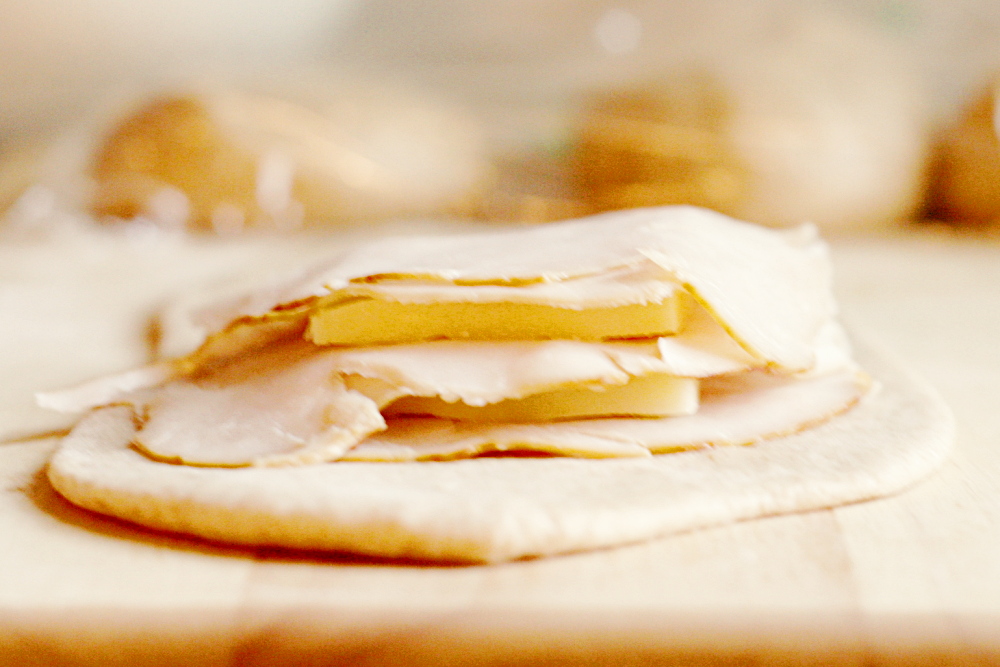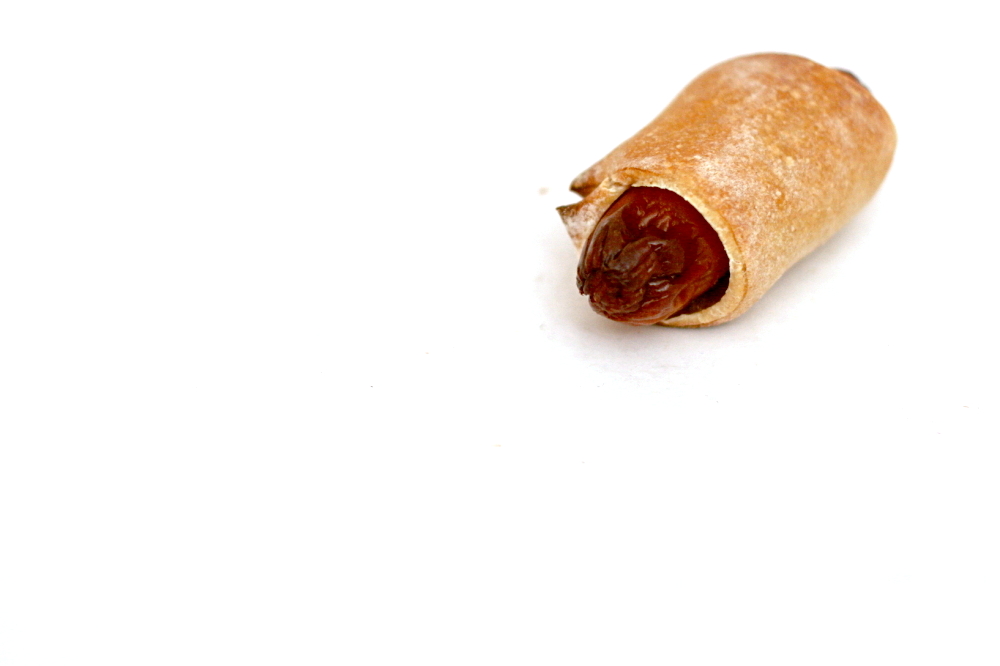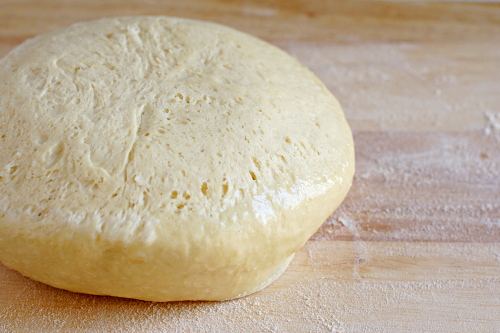This is a recipe that has drastically changed throughout the years. Six years ago, I got the idea for sandwich filling sealed in biscuits from a book of backpacking recipes. I originally followed the recipe exactly, making biscuits with whole wheat and soy flour. They were so dense that they earned the name “monsters” with my group of backpacking friends. Every time I’ve made them since, I’ve adjusted the biscuit recipe slightly, making it lighter and adding flavor. Still, the biscuits always seem dry and dense.
I finally had an epiphany this last time – the fundamental flaw in this recipe is that biscuits are used at all. Biscuits are best fresh out of the oven, not carried around in a backpack for three days. I’m guessing the backpacking recipe book developed the recipe with biscuits because they assumed that the average backpacker wasn’t comfortable baking with yeast. But as far as food preparation goes, I am not the average backpacker.
That led to Monsters 2.0 – meat and cheese sealed in my favorite sandwich bread. These were far better than the original Monsters. They stayed sealed better – the biscuit versions tended to pop open. They’re healthier, since biscuits usually contain high amounts of fat. And although yeast bread requires more patience than biscuits, I don’t think this new version involves any more actual effort than the biscuit version.
But the main advantage was, of course, in the eating. We ate these four days after I made them, and they still tasted fresh. And while food always tastes better in the woods, I think Monsters have their place at home as well. You can make a batch, bake them, freeze them, and then have a delicious sandwich ready whenever you need it.
Monsters 2.0 (Stuffed Sandwich Rolls) (bread recipe pieced together from Betty Crocker, Cooks Illustrated, and Peter Reinhart)
Makes 12 sandwiches
I apologize for the vagueness of “sandwich fillings” as an ingredient. You can use whatever you want, although cheese and meat is the obvious choice. I think ham makes the best filling because it keeps well. That being said, I always use turkey because one of my friends who I often make these for doesn’t eat red meat. I don’t know how we get away with eating turkey that hasn’t been refrigerated for days, but no one has ever had a problem with it. As far as how much to use – as much as possible. I’ll update this next time I make these with something more precise, but I never use enough filling. Definitely use more than you see in the photos.
3-3½ cups (15-17½ ounces) unbleached flour, plus extra for work surface
1½ teaspoons table salt
1 cup water, warm (110 degrees)
1 egg
2 tablespoons vegetable oil or unsalted butter, melted
¼ cup (1.75 ounces) granulated sugar or 3 tablespoons honey
1 package (2¼ teaspoons) rapid-rise yeast (also called instant)
Sandwich fillings (see note above)
2 tablespoons milk
1. Adjust an oven rack to middle position and heat the oven to 200 degrees. Once the oven temperature reaches 200 degrees, maintain heat for 10 minutes, then turn off the oven.
2. Mix flour, salt, and yeast in the bowl of a standing mixer fitted with the dough hook. Mix water, egg, butter, and honey in 1-quart Pyrex liquid measuring cup. Turn machine to low and slowly add liquid. When dough comes together, increase speed to medium (setting number 4 on a KitchenAid mixer) and mix until dough is smooth and satiny, stopping machine two or three times to scrape dough from hook if necessary, about 10 minutes. Turn dough onto lightly floured work surface; knead to form smooth, round ball, about 15 seconds.
3. Place dough in very lightly oiled bowl, rubbing dough around bowl to lightly coat. Cover bowl with plastic wrap; place in warm oven until dough doubles in size, 40 to 50 minutes.
4. Divide the dough into 12 equal pieces. Form the pieces into smooth balls. Cover the balls with plastic wrap and allow them to rest for 10 minutes.
5. On a lightly floured work surface, roll out each ball to form an oval ⅛-inch thick. Layer sandwich filling on one side of each oval, leaving a ½-inch border. Fold dough over filling, stretching it a bit if absolutely necessary. Seal the edges with the tines of a fork.
6. Cover the rolls loosely with plastic wrap. Let rise until puffy, 30-45 minutes.
7. Heat oven to 350F. Use the tines of a fork to re-seal the edges of the rolls. Using a pastry brush, brush the rolls with the milk.
8. Bake until rolls are golden, 25-40 minutes. Transfer the rolls to a cooling rack. Wait at least 30 minutes before serving.







































































